
Primo Michele Levi was an Italian chemist, partisan, writer, and Jewish Holocaust survivor. He was the author of several books, collections of short stories, essays, poems and one novel. His best-known works include If This Is a Man, his account of the year he spent as a prisoner in the Auschwitz concentration camp in Nazi-occupied Poland; and The Periodic Table (1975), linked to qualities of the elements, which the Royal Institution named the best science book ever written.

James Arthur Baldwin was an American writer. He garnered acclaim across various mediums, including essays, novels, plays, and poems. His first novel, Go Tell It on the Mountain, was published in 1953; decades later, Time magazine included the novel on its list of the 100 best English-language novels released from 1923 to 2005. His first essay collection, Notes of a Native Son, was published in 1955.

Cujo is a 1981 psychological horror novel by American writer Stephen King about a rabid Saint Bernard. The novel won the British Fantasy Award in 1982 and was made into a film in 1983.

The Old Curiosity Shop is one of two novels which Charles Dickens published along with short stories in his weekly serial Master Humphrey's Clock, from 1840 to 1841. It was so popular that New York readers stormed the wharf when the ship bearing the final instalment arrived in 1841. The Old Curiosity Shop was printed in book form in 1841.
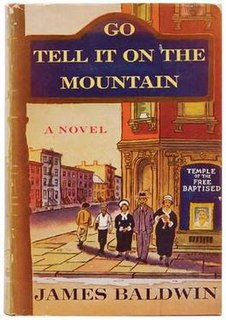
Go Tell It on the Mountain is a 1953 semi-autobiographical novel by James Baldwin. It tells the story of John Grimes, an intelligent teenager in 1930s Harlem, and his relationship with his family and his church. The novel also reveals the back stories of John's mother, his biological father, and his violent, fanatically religious stepfather, Gabriel Grimes. The novel focuses on the role of the Pentecostal Church in the lives of African Americans, both as a negative source of repression and moral hypocrisy and a positive source of inspiration and community. In 1998, the Modern Library ranked Go Tell It on the Mountain 39th on its list of the 100 best English-language novels of the 20th century. Time magazine included the novel on its list of the 100 best English-language novels released from 1923 to 2005.
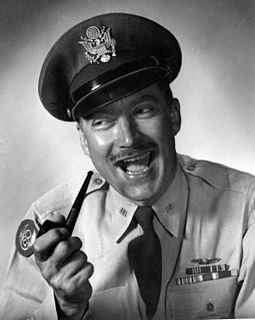
MacKinlay Kantor, born Benjamin McKinlay Kantor, was an American journalist, novelist and screenwriter. He wrote more than 30 novels, several set during the American Civil War, and was awarded the Pulitzer Prize for Fiction in 1956 for his 1955 novel, Andersonville. He also wrote the novel Gettysburg, set during the Civil War.

Beloved is a 1987 novel by American novelist Toni Morrison. Set in the period after the American Civil War, the novel tells the story of a dysfunctional family of formerly enslaved people whose Cincinnati home is haunted by a malevolent spirit. The narrative of Beloved derives from the life of Margaret Garner, an enslaved person in the slave state of Kentucky who escaped and fled to the free state of Ohio in 1856.

The Wind-Up Bird Chronicle is a novel published in 1994–1995 by Japanese author Haruki Murakami. The American translation and its British adaptation, dubbed the "only official translations" (English), are by Jay Rubin and were first published in 1997. For this novel, Murakami received the Yomiuri Literary Award, which was awarded to him by one of his harshest former critics, Kenzaburō Ōe.

Extremely Loud & Incredibly Close is a 2005 novel by Jonathan Safran Foer. The book's narrator is a nine-year-old boy named Oskar Schell. In the story, Oskar discovers a key in a vase that belonged to his father, a year after he is killed in the September 11 attacks. The discovery inspires Oskar to search all around New York for information about the key and closure following his father's death.
The Holocaust has been a prominent subject of art and literature throughout the second half of the twentieth century. There are a wide range of ways – including dance, film, literature, music, and television – in which the Holocaust has represented in the arts and popular culture.
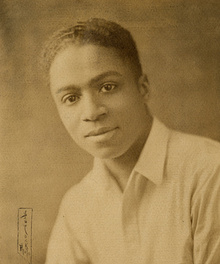
Rudolph John Chauncey Fisher was an American physician, radiologist, novelist, short story writer, dramatist, musician, and orator. His father was John Wesley Fisher, a clergyman, his mother was Glendora Williamson Fisher, and he had two siblings. Fisher married Jane Ryder, a school teacher from Washington, D.C. in 1925, and they had one son, Hugh, who was born in 1926 and was also nicknamed "The New Negro" as a tribute to the Harlem renaissance. Fisher had a successful career as an innovative doctor and author, who discussed the dynamics and relationships of Black and White people living in Harlem. This racial conflict was a central theme in many of his works.

The Boy in the Striped Pyjamas is a 2006 Holocaust novel by Irish novelist John Boyne. Much like the process he undertakes when writing most of his novels, Boyne has said that he wrote the entire first draft in two and a half days, without sleeping much, but also that he was quite a serious student of Holocaust-related literature for years before the idea for the novel even came to him. The book has received mixed reviews; while positive reviews praise the story as a moral, negative reviews attack the book's historical inconsistencies, and the potential damage it could cause to people's Holocaust education.
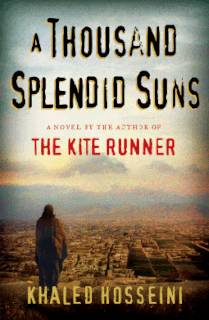
A Thousand Splendid Suns is a 2007 novel by Afghan-American author Khaled Hosseini, following the huge success of his bestselling 2003 debut The Kite Runner. Mariam, an illegitimate teenager from Herat, is forced to marry a shoemaker from Kabul after a family tragedy. Laila, born a generation later, lives a relatively privileged life, but her life intersects with Mariam's when a similar tragedy forces her to accept a marriage proposal from Mariam's husband.
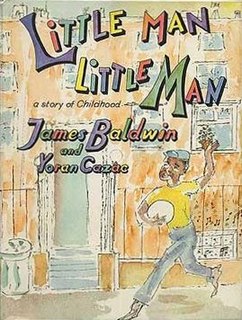
Little Man Little Man: A Story of Childhood is a 1976 children's novel written by James Baldwin and Yoran Cazac

Random Acts of Heroic Love (2007) is a semi-autobiographical debut novel by the author and actor Danny Scheinmann. It follows the parallel stories of two unconsciously connected men in two different time eras motivated by the memory of love: Moritz Daniecki, a young Austro-Hungarian soldier captured by the Russians during the First World War and sent to a POW camp in Siberia, who decides to escape in 1917 and walk thousands of miles for the sake of his childhood sweetheart Lotte; and Leo Deakin, who loses his beloved girlfriend Eleni in a bus crash in Ecuador in 1992, and in his despair embarks on his own journey of discovery and self-reconciliation.

The Pawnbroker is a 1964 American drama film directed by Sidney Lumet, starring Rod Steiger, Geraldine Fitzgerald, Brock Peters and Jaime Sánchez. The screenplay was an adaptation by Morton S. Fine and David Friedkin from the novel of the same name by Edward Lewis Wallant.
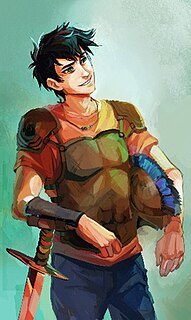
Perseus "Percy" Jackson is a fictional character, the title character and narrator of Rick Riordan's Percy Jackson & the Olympians series. He is also one of seven main protagonists of the sequel series The Heroes of Olympus, appearing in every book except The Lost Hero, and appears in the Trials of Apollo series, making him one of the few characters to appear in all three series of the Camp Half-Blood chronicles. He has also been a narrator and protagonist in Riordan's Greco-Roman/Egyptian crossover stories, part of the Demigods and Magicians collection. The character serves as the narrator in Percy Jackson's Greek Gods and Percy Jackson's Greek Heroes, also by Rick Riordan.

The Leopard is a crime novel by Norwegian novelist Jo Nesbø. Its Norwegian title is Panserhjerte, which does not directly translate to The Leopard; it rather means something along the lines of "armoured heart". Moreover, "leopard" refers to the stealthy tread of the killer in the book, while "armoured heart" is what Harry Hole himself gains by his experiences. Panserhjerte is also a Norwegian term for Constrictive pericarditis. The Leopard is the eighth novel featuring Nesbø's crime detective, Inspector Harry Hole.
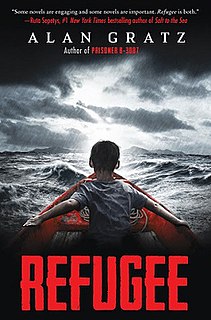
Refugee is a young adult literature novel by Alan Gratz published by Scholastic Corporation in 2017.


















